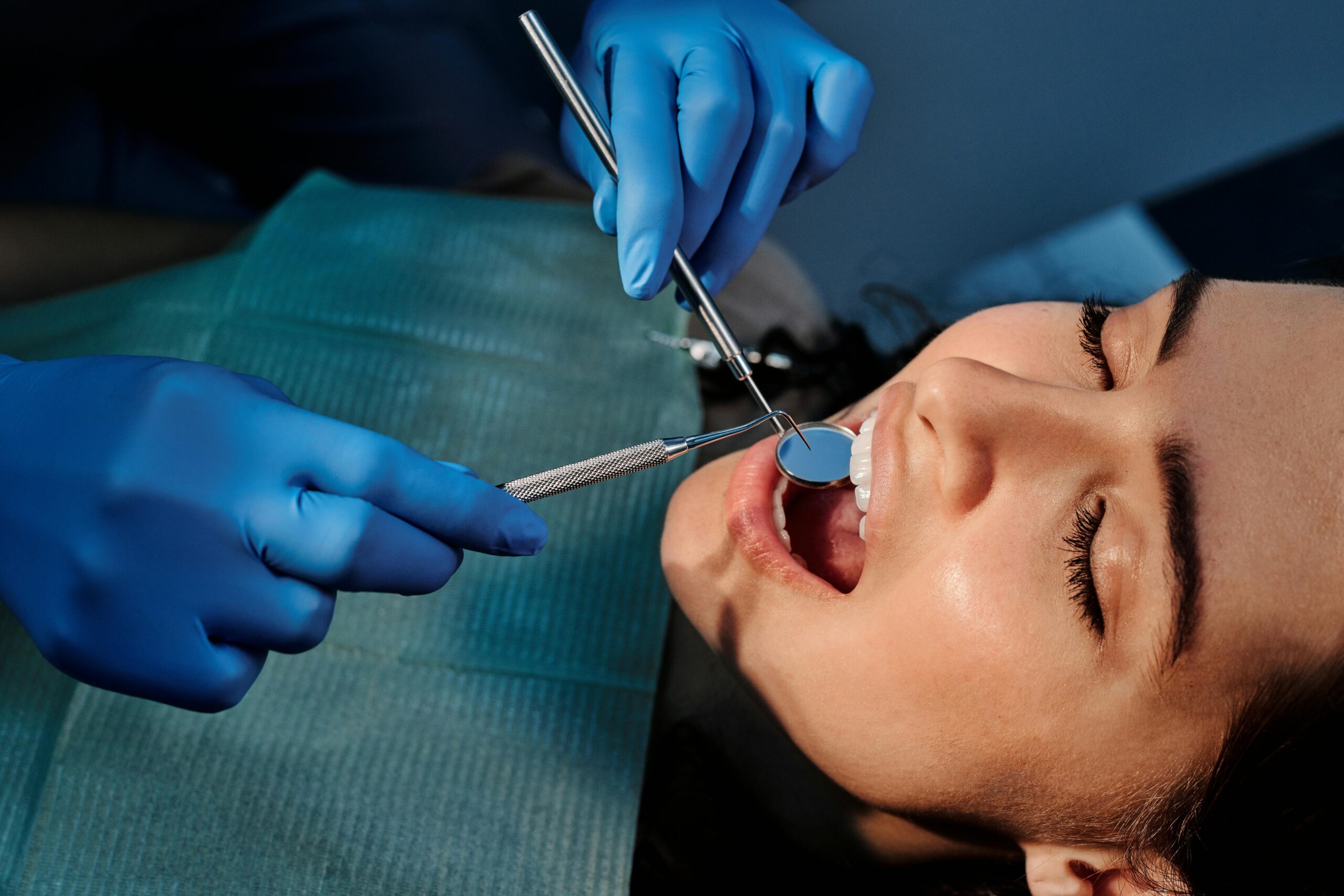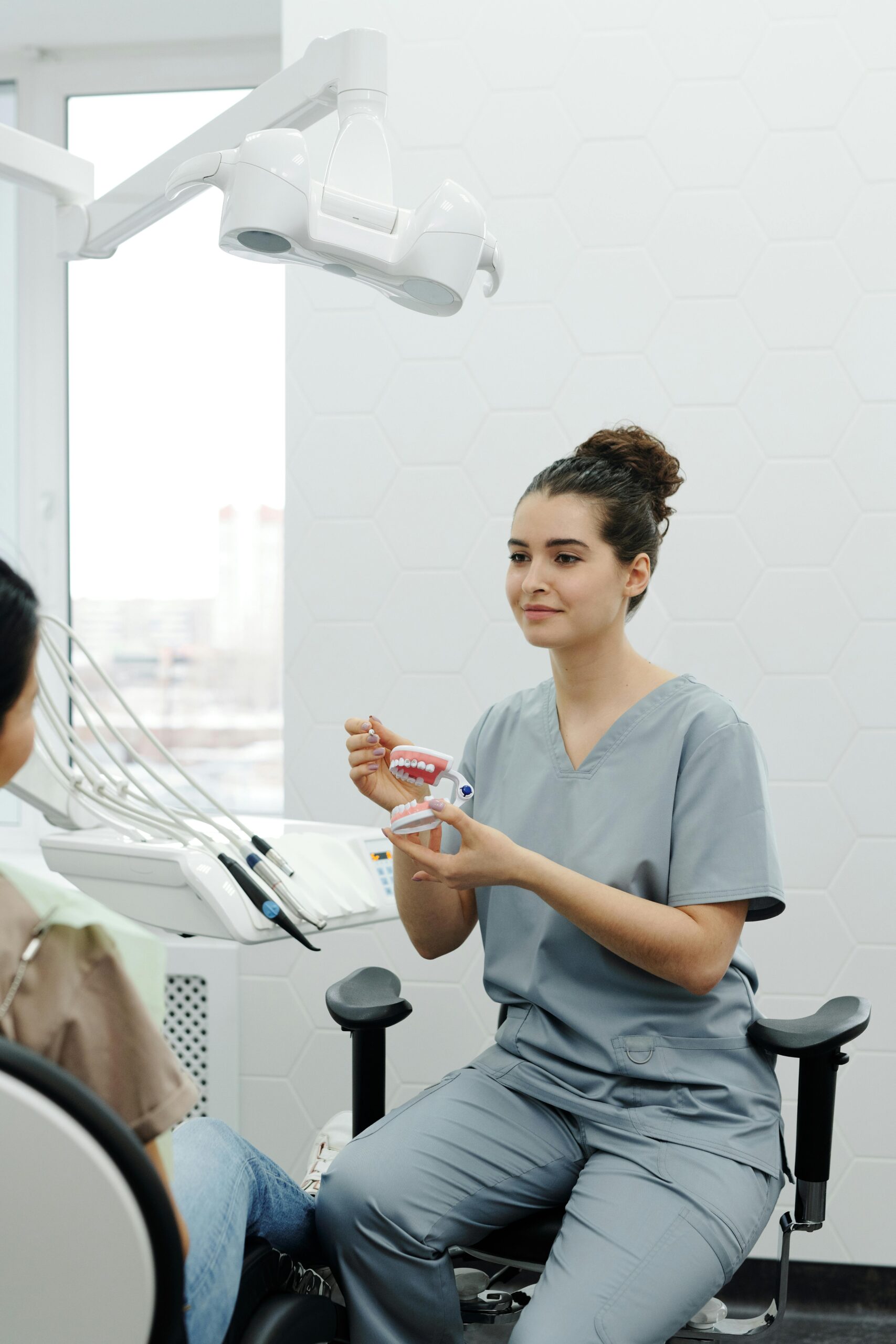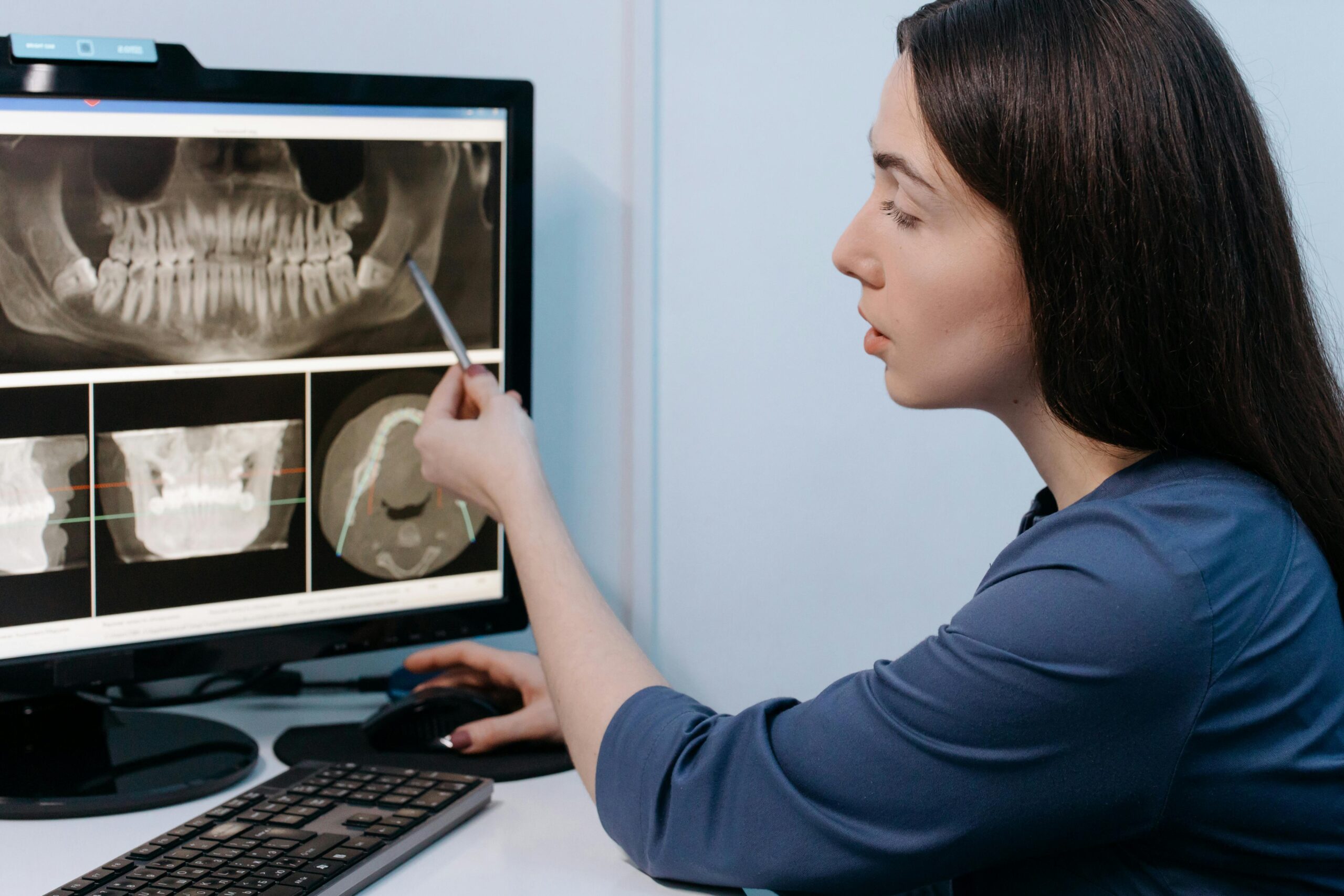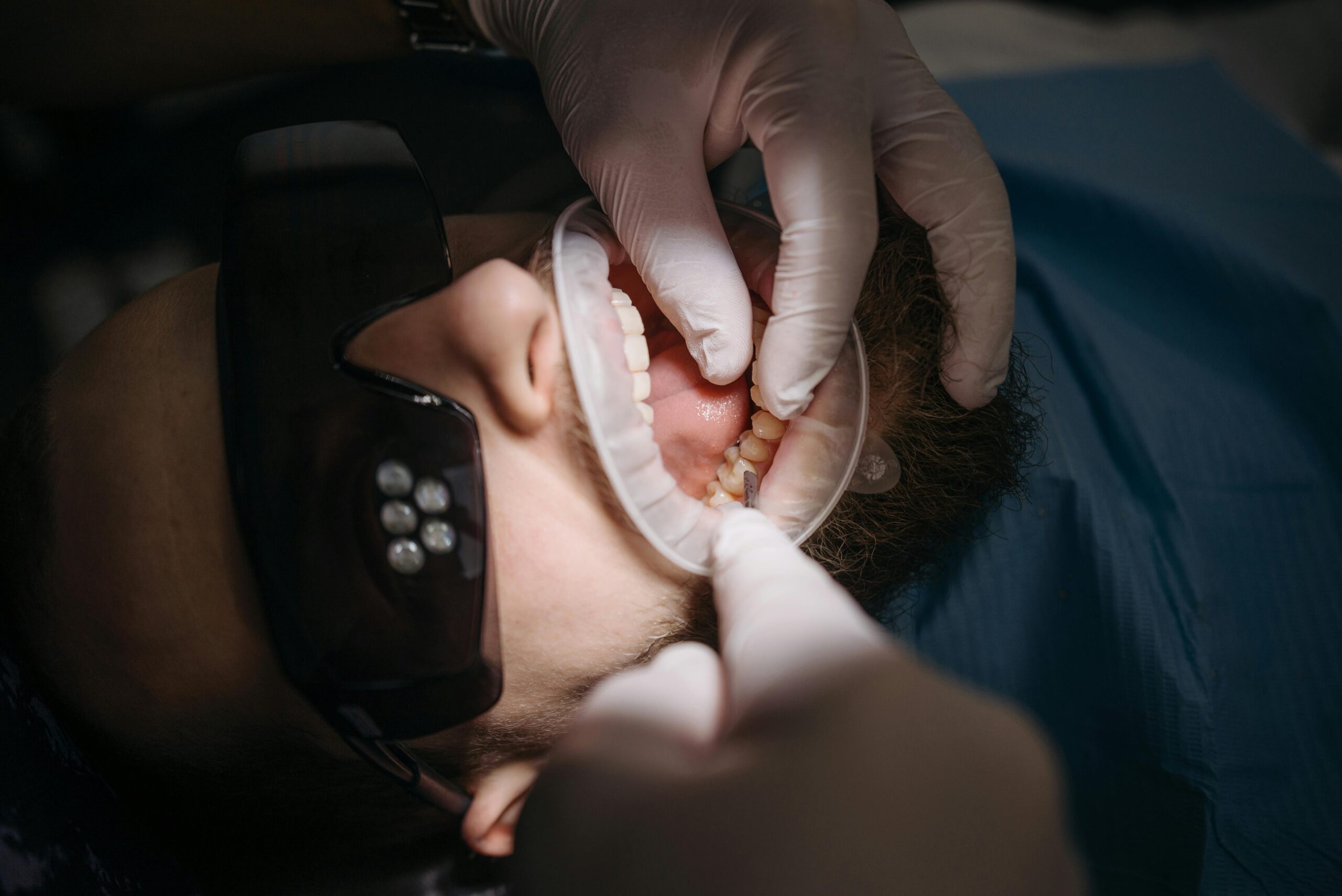Understanding Dental Emergencies
A dental emergency is a mouth problem that needs urgent dental care to relieve severe pain, stop bleeding, control infection, or save a tooth. Common examples include a severe toothache, facial swelling, a broken or knocked-out tooth, or bleeding that will not stop. Getting prompt care protects your health and can make treatment simpler.
- Severe toothache that wakes you up or makes it hard to function
- Facial or gum swelling, warmth, or a bad taste suggesting infection
- Knocked-out tooth (handle the crown, keep it moist)
- Broken tooth with sharp edges, deep fracture, or pain
- Bleeding that doesn’t stop after gentle pressure
- Injuries to lips, tongue, or jaw with deep cuts or loose teeth
Issues that often can wait briefly include a lost filling or crown without pain, a minor chip, or a small soft-tissue bite that stops bleeding. If symptoms worsen—more pain, swelling, or fever—treat it as urgent. For planning your visit, check our current hours.
Many severe toothaches come from inflamed or infected tooth pulp. These are commonly addressed with root canal treatment in Glendale, AZ, which aims to relieve pain and preserve the natural tooth.
Pain or swelling from an impacted or infected third molar often needs evaluation for wisdom tooth removal, especially if chewing is difficult or the gum tissue is irritated.
Go to the nearest emergency room—rather than a dental office—if you have trouble breathing or swallowing, rapidly spreading swelling, high fever, heavy uncontrolled bleeding, or a possible broken jaw. If you’re searching for an emergency dentist near me, acting quickly and calling for guidance can help protect your smile.
When to See an Emergency Dentist
See an emergency dentist promptly if you have severe tooth pain, facial swelling, a broken or knocked-out tooth, or bleeding that will not stop. Time matters for infections and injured teeth; quick care can relieve pain, protect your health, and may save a tooth. If you have trouble breathing or swallowing, a high fever, or a suspected broken jaw, go to the nearest emergency room first.
Tooth pain that lingers, wakes you at night, or hurts to bite often means the tooth’s nerve is inflamed or infected. These problems are treated with dental procedures that remove the source of infection and seal the tooth, not painkillers or antibiotics alone. Antibiotics are reserved for specific situations, such as spreading infection or systemic symptoms, and they do not resolve nerve-based toothache by themselves [1]. If symptoms escalate—more swelling, fever, or difficulty opening your mouth—treat it as urgent.
Cracked or broken teeth should be seen soon, especially if you feel pain, sensitivity, or sharp edges that can cut your tongue or cheek. Deep fractures that expose the nerve are time-sensitive and may need stabilizing care or a definitive restoration. Depending on the evaluation, solutions can include smoothing sharp areas, temporary protection, or definitive coverage with custom dental crowns and bridges.
Knocked-out adult teeth, deep cuts inside the mouth, or sudden swelling under the jaw or tongue need same-day attention. While you arrange care, keep a knocked-out tooth moist in milk or saline, avoid scrubbing the root, and handle it by the crown. In-office, dentists may use targeted numbing techniques—for example, a mental nerve block for lower front and premolar regions—to control pain while definitive treatment is arranged [2]. If you are unsure how urgent your situation is, a quick call to an emergency dentist near me can help you decide whether to come in now or schedule the next available visit.
How to Find an Emergency Dentist Near Me
Start by searching local dental offices and checking who is “open now” and able to see same-day patients. When you call, explain your symptoms and ask if they offer urgent visits today and what to do before you arrive. Prioritize an emergency dentist near me who can give clear guidance, confirm imaging on-site, and provide next-step care the same day.
On the call, be specific: when the pain or injury started, what makes it worse, and any swelling, fever, or trouble opening your mouth. Ask if the office can take dental X‑rays right away and manage common urgent needs like temporary pain control, pulpal care, or simple extractions at the same visit. If you are very anxious, ask about oral sedation options so you know what is available before you arrive.
Confirm practical details so your visit goes smoothly. Ask about their earliest arrival time, directions and parking, and what to bring (photo ID, a list of medicines, allergy information, and any dental appliance or fragments related to the injury). If a tooth was knocked loose or broken, tell the team so they can prepare the proper materials before you arrive.
If it is after hours, check the office voicemail and website for an emergency line or instructions. Many practices provide call-back triage to help you decide whether to be seen now, first thing in the morning, or to go to hospital care if symptoms are severe. If you cannot reach a dental office, consider hospital dental departments, teaching clinics, or a dental urgent care that lists after-hours availability.
Match the office’s services to your likely need. For deep decay pain, ask if they provide same-visit pulpal treatment or can stabilize the tooth until a definitive procedure. For severe infections or complex extractions, ask whether they offer advanced anesthesia, such as deep sedation care, or have a referral pathway with a specialist. Using clear questions helps you find a same day dentist prepared for your situation.
Types of Urgent Dental Care Services
Urgent dental care focuses on stopping pain, controlling infection, and stabilizing injured teeth and gums. Common services include same‑day exams and X‑rays, targeted numbing, pulpal therapy to calm nerve pain, incision and drainage for abscesses, re‑cementing loose crowns, smoothing sharp edges, splinting loose teeth, suturing cuts, and extractions when a tooth cannot be saved. The exact plan depends on your symptoms, how fast they started, and what imaging shows.
For severe toothaches, dentists may perform a pulpotomy or begin root canal treatment to remove inflamed tissue and relieve pressure inside the tooth. A protective temporary filling is often placed the same day, with a follow‑up visit to finish the tooth and restore its strength. Pain medicine may help comfort, but the real fix is treating the source of the pain. Antibiotics are used only when there are signs of spreading infection or systemic symptoms; they do not resolve nerve-based pain on their own.
For broken or chipped teeth, urgent care aims to protect the tooth and your soft tissues. This can include smoothing sharp enamel, placing a temporary cover, or rebuilding missing edges with gentle, tooth‑colored dental bonding for minor fractures. If the crack is deeper or the tooth is sensitive to biting, the dentist may stabilize it now and plan a definitive restoration after the tooth settles.
Dental trauma services address knocked‑out or loosened teeth, as well as cuts to lips, cheeks, and gums. When appropriate, an avulsed adult tooth may be replanted and splinted; baby teeth are handled differently to protect the developing adult tooth. If a tooth cannot be saved, the team can discuss short‑term tooth replacement—such as temporary partial dentures for a missing front tooth—while you consider long‑term options. If you are unsure which service you need, calling an emergency dentist near me can help you decide the right next step today.
What Constitutes a Tooth Emergency?
A tooth emergency is a problem in your mouth that needs same‑day dental care to stop severe pain, control bleeding, treat infection, or save a tooth. Signs include intense, lingering toothache, facial swelling, a tooth that is broken or knocked out, or bleeding that does not stop with gentle pressure. These issues are time‑sensitive because delays can make treatment harder and risks higher.
Pain is a key clue. A deep, throbbing toothache, pain that wakes you at night, or sharp pain when biting can mean the nerve inside the tooth is inflamed or infected. Heat or cold sensitivity that lingers, swelling near a tooth, or a bad taste may also signal infection. These situations warrant urgent evaluation to find the source and prevent spread.
Swelling that spreads in the face or under the jaw, new difficulty opening your mouth, fever, or feeling unwell are red flags for a dental infection that is moving beyond a single tooth. Rapidly worsening swelling, trouble breathing or swallowing, or heavy uncontrolled bleeding require emergency medical care at a hospital. Otherwise, prompt dental care can often manage the infection and stabilize the area.
Injuries are emergencies when a tooth is knocked out, pushed out of position, or fractured deeply, or when the lips, cheeks, or gums have gaping cuts. Traumatic dental injuries are a common reason people seek after‑hours dental care, and timely assessment improves outcomes [3]. Sports impacts, falls, or bites on hard objects can all cause these problems.
By contrast, minor issues without strong pain or swelling—such as brief cold sensitivity or a smooth chip—are usually not emergencies, though they should still be checked soon. When in doubt, consider severity, speed of change, and whether the problem affects breathing, swallowing, or tooth survival. If you notice any of the emergency signs above, searching for an emergency dentist near me and calling for guidance can help you decide the safest next step today.
Benefits of a 24 Hour Dentist
A 24-hour dentist helps when problems cannot wait, offering guidance and care at the time you need it most. Quick access can ease severe pain, control infection sooner, and improve the chances of saving an injured tooth. You also get help deciding whether to come in now, wait until morning, or go straight to the emergency room if there are red flags like trouble breathing or swallowing.
After-hours triage is a major benefit. A brief call can clarify simple steps to protect a tooth (for example, how to keep a knocked-out tooth moist) and what to avoid until you are seen. When you arrive, the team can take X-rays, numb the area, and start stabilizing care—such as smoothing sharp edges, protecting an exposed nerve, or opening a tooth to relieve pressure—so you can rest and plan the next steps.
Time matters with dental infections and injuries. Early treatment can reduce swelling and pain, and may prevent a localized problem from spreading. For trauma, sooner assessment often leads to better outcomes for chipped, displaced, or avulsed teeth. If hospital-level issues are suspected, a 24-hour dentist helps you recognize them quickly and directs you to urgent medical care without delay.
Continuity of care is another advantage. After emergency relief, the same office can schedule definitive treatment and follow-up, which streamlines communication and shortens recovery. For example, a front tooth that was stabilized after a fracture might later be restored with natural-looking porcelain veneers for long-term esthetics, once the tooth and gums have healed.
Access around the clock also reduces the stress of uncertainty. Clear, timely instructions mean fewer sleepless nights, fewer unnecessary ER visits for tooth pain, and a smoother path to getting fully well. If you are searching for an emergency dentist near me outside regular hours, knowing a 24-hour option is available can make a difficult moment feel manageable and safer.
Steps to Take in a Dental Emergency
First, stay calm and protect your health. If you have trouble breathing or swallowing, rapidly spreading swelling, heavy bleeding, or a possible broken jaw, go to the nearest emergency room. Otherwise, call a dental office right away, briefly describe your symptoms, and follow their guidance for the next safe step.
Control bleeding by placing clean gauze or a cloth over the area and applying steady, gentle pressure for 10–15 minutes. Keep your head elevated and avoid spitting or vigorous rinsing, which can restart bleeding. If a tooth fragment or restoration has come off, place it in a small clean container and bring it to your visit.
If an adult tooth is knocked out, pick it up by the crown (the white chewing surface), not the root. If dirty, rinse gently with saline or milk; do not scrub or dry it. If you can, place it back in the socket carefully and bite on gauze to hold it in place. If that is not possible, keep the tooth moist in milk or saline and seek same‑day care. For a loose or displaced tooth, avoid biting with that area and try not to push it with your tongue.
For a cracked or broken tooth, protect your mouth from sharp edges by placing a bit of clean cotton or orthodontic wax over the area. Avoid chewing on that side. Sensitivity to cold or air is common; short, gentle rinses with room‑temperature water can help keep the area clean until you are seen.
For pain and swelling, a cold compress on the cheek—10 minutes on, then off—can reduce discomfort. Avoid heat on the face, as it may increase swelling. Over‑the‑counter pain relievers may help for a short time, but they do not treat the cause; timely dental care is important. If you notice fever, worsening swelling, or difficulty opening your mouth, treat the situation as urgent.
Before you head out, bring a photo ID, a list of medications and allergies, and any dental appliances or fragments. If you are unsure how urgent it is, a quick call to an emergency dentist near me can help you decide whether to come in now or schedule the next available visit.
The Role of Same Day Dentists
Same day dentists focus on urgent problems the day you call, aiming to relieve pain, control infection, and protect teeth right away. They triage your symptoms, decide if you need immediate care in the office or the hospital, and start treatment that stabilizes your mouth so you can heal. Getting prompt help from a same day team can preserve teeth and shorten recovery. If you are unsure where to start, searching for an emergency dentist near me can guide your next step.
Care begins with quick triage. The team listens for red flags like trouble breathing or swallowing and directs you to emergency medical care if needed. In the office, they take a focused history, examine the area, and obtain X‑rays to locate the source of pain or injury. Numbing is provided early, so you can be comfortable while the plan is made.
For severe toothache from inflamed or infected pulp, same day dentists may perform pulpal therapy (such as opening the tooth to relieve pressure) or begin root canal treatment to remove the source of pain. A protective temporary filling often follows, with a follow‑up visit to complete the tooth and restore strength. If a tooth cannot be saved or is causing spreading infection, they discuss extraction and how to replace the tooth after the area heals.
For broken or chipped teeth, the goal is to protect the tooth and soft tissues now. This may include smoothing sharp edges, placing a temporary cover, or rebuilding missing enamel for comfort. If the fracture is deep or the tooth is sensitive to biting, the dentist stabilizes it and plans a definitive restoration once the tooth settles.
With dental trauma, timely steps can make a difference. Same day dentists replant appropriate avulsed adult teeth, splint loosened teeth, and suture soft‑tissue cuts. For infections, they may drain an abscess when indicated, adjust your bite if it worsens pain, and provide guidance on medicines and home care. They also coordinate referrals for complex extractions, deep‑space infections, or advanced anesthesia needs, and schedule definitive care so you are not left in limbo.
Preparing for Your Emergency Dental Visit
Good preparation helps your visit go faster and safer. Call the office as soon as you can, describe your symptoms, and follow any instructions they give before you arrive. Gather essentials, protect the injured area, and plan transportation if you might receive numbing or sedation. If you searched for an emergency dentist near me, a short call confirms what to bring and when to come.
Bring a photo ID, a list of medications and doses, and any allergies. Note key medical conditions (such as heart issues, diabetes, bleeding disorders, pregnancy, or recent surgery) and whether you take blood thinners. If something came out or broke, place tooth fragments, crowns, or appliances in a clean container and bring them with you. For a knocked‑out adult tooth, keep it moist in milk or saline and avoid touching or cleaning the root; do not let it dry out.
Before you arrive, avoid chewing on the injured side and skip very hot or cold foods and drinks. Do not place aspirin on the gums—it can burn tissue. A cold compress on the cheek (10 minutes on, then off) can help reduce swelling. If sedation may be used, ask the office if you should avoid food or drink beforehand and arrange a responsible adult to drive you.
Wear comfortable clothing and remove oral or lip jewelry if possible. If you use dental appliances (retainer, night guard, partial denture), bring them—even if they are damaged. Have your pharmacy name and phone number handy in case medicines are prescribed. If you have dental insurance, bring your card; if not, still come—urgent care decisions are based on health needs first.
Expect a focused exam and X‑rays to find the source of pain or injury, followed by numbing to keep you comfortable. The team will stabilize the problem—controlling pain or bleeding and addressing infection or trauma—then outline next‑step care and follow‑up. If you feel more unwell (fever, spreading swelling, trouble swallowing) while waiting, update the office immediately so your plan can be adjusted or you can be directed to medical care.
Cost Considerations for Urgent Dental Care
The cost of urgent dental care depends on what is needed to diagnose the problem, relieve pain, and stabilize the tooth. Fees are influenced by the exam and X‑rays, the complexity and location of the tooth, whether treatment happens after hours, and the type of procedure performed. Sedation, medications, and follow‑up visits can also affect the total.
Most emergency visits start with a focused exam and one or more X‑rays to find the source of pain. Many people also need a same‑day step to feel better—such as numbing, opening a tooth to relieve pressure, smoothing sharp edges, re‑cementing a crown, placing a temporary filling, or draining an abscess when appropriate. The materials used and how many teeth are involved can change the cost.
The treatment path matters. Stabilizing measures may be enough for the moment, but definitive care is often needed to fix the cause. For example, a painful tooth with inflamed or infected pulp may be treated by starting root canal therapy now and finishing later, or by extracting the tooth if it cannot be saved. An extraction may seem simpler up front but can lead to future costs to replace the tooth; saving a tooth can require later restoration to protect it. Your dentist can outline immediate relief and longer‑term options so you can plan.
Timing and comfort choices can add to fees. After‑hours or weekend care can include surcharges, and advanced anesthesia (such as oral or deeper sedation) may carry separate costs. Medicines, protective splints, and additional imaging are sometimes needed. Hospital emergency departments often control pain and prescribe medications but typically do not provide definitive dental procedures, so you may still need a dentist visit afterward.
If you have dental insurance, coverage for emergency exams, X‑rays, and urgent procedures varies by plan, annual maximums, and deductibles. Bring your card so benefits can be checked quickly. If you are paying out of pocket, ask for a clear, written estimate before treatment and request alternatives when appropriate (for example, a staged plan that addresses the most urgent tooth first). Acting early—rather than waiting—can limit how complex care becomes. If you are unsure where to start, a quick call to an emergency dentist near me can help you choose a sensible next step today.
Frequently Asked Questions
Here are quick answers to common questions people have about Emergency Dentist Near Me: What to Do in a Dental Emergency in Glendale, AZ.
- What should I do if I have a severe toothache?
If you have a severe toothache, start by rinsing your mouth gently with warm water. Use dental floss to remove any trapped food. Avoid placing aspirin directly on the tooth or gums, as it can cause burns. Apply a cold compress on your cheek to reduce swelling and contact an emergency dentist promptly. Do not delay, as a toothache often signals inflammation or infection in the tooth, which can get worse without treatment.
- How should I handle a knocked-out tooth?
To save a knocked-out tooth, pick it up by the crown, not the root. If dirty, rinse it gently with saline or milk without scrubbing. Try placing it back in the socket if possible and bite down on gauze to keep it secure. If not, store it in milk or a tooth preservation kit. Seek dental attention immediately—replanting quickly can increase the chances of saving the tooth.
- When is it necessary to visit an emergency room instead of a dentist?
Visit an emergency room if you have trouble breathing or swallowing, uncontrolled heavy bleeding, a high fever with possible spreading infection, or a suspected broken jaw. These situations need immediate medical care beyond dental treatment. For other dental emergencies, such as severe pain or a knocked-out tooth, call your emergency dentist first to see if they can assess and manage the issue promptly.
- What can I do for pain relief until I see a dentist?
For temporary pain relief, over-the-counter pain relievers like ibuprofen or acetaminophen can help, but they won’t fix the underlying issue. Avoid placing aspirin directly on gums. Apply a cold compress to the outside of your mouth, where the pain or swelling is, for 10-minute intervals. Do not use heat as it can worsen swelling, and make an appointment with an emergency dentist to address the root cause.
- Can I call a dentist for advice without visiting the office?
Yes, many dental offices offer phone guidance for emergencies outside normal hours. A call can help determine whether you need immediate in-office care or if simple steps will manage your symptoms temporarily. Be prepared to describe your symptoms clearly, including any pain, swelling, or other concerns, to receive accurate advice on next steps.
- What should I bring to an emergency dental visit?
Bring a photo ID, insurance card if applicable, a list of any medications you are taking, and any allergies. If a tooth or dental appliance has been knocked out or broken, bring those along in a clean container. Keeping any knocked-out teeth or fragments in milk can help preserve them until you arrive. Having this information ready can help the dentist provide the quickest and safest care.
- How can I prevent dental emergencies in the future?
To prevent dental emergencies, maintain good oral hygiene by brushing twice daily and flossing. Wear protective gear like mouthguards during sports and avoid hard foods like ice or unpopped popcorn kernels that can cause tooth breakage. Regular dental check-ups can catch potential problems before they become emergencies. Establishing these habits reduces risk and helps keep your smile healthy over time.
- How do I find a reliable emergency dentist in my area?
To find a reliable emergency dentist, search online for local dentists open now, read reviews, and call to ask about their emergency procedures. Confirm they can provide same-day imaging and treatment if required. Recommendations from friends or family can also be useful. Prioritize practices with clear instructions and availability that matches your immediate needs.
References
- [1] Antibiotic use in endodontic treatment during pregnancy: A narrative review. (2022) — PubMed:36268928 / DOI: 10.4081/ejtm.2022.10813
- [2] Mental Nerve Block. (2025) — PubMed:29489259
- [3] Traumatic dental injuries among children attending the public after-hours emergency dental clinic in Bergen, Norway. (2024) — PubMed:38742966 / DOI: 10.2340/aos.v83.40622




